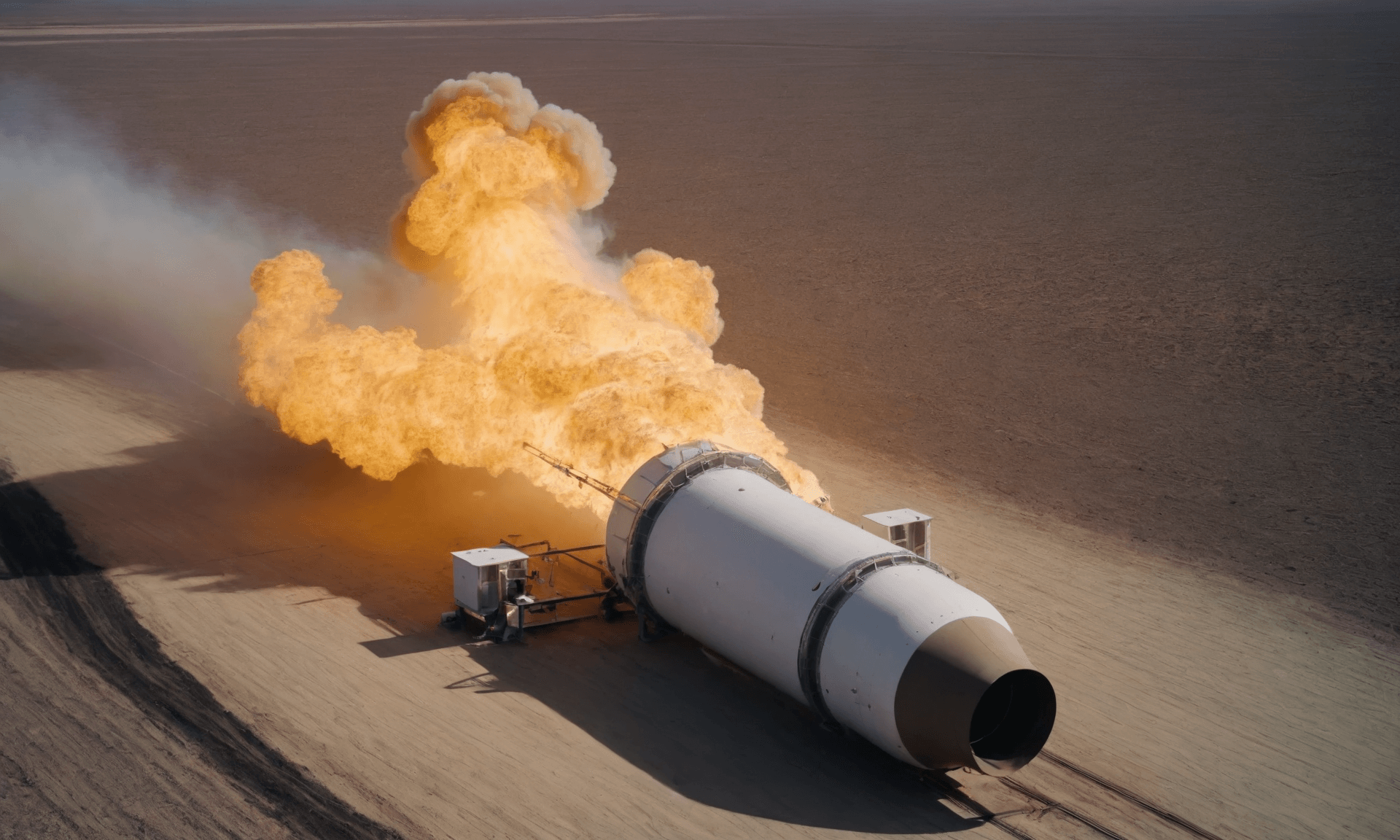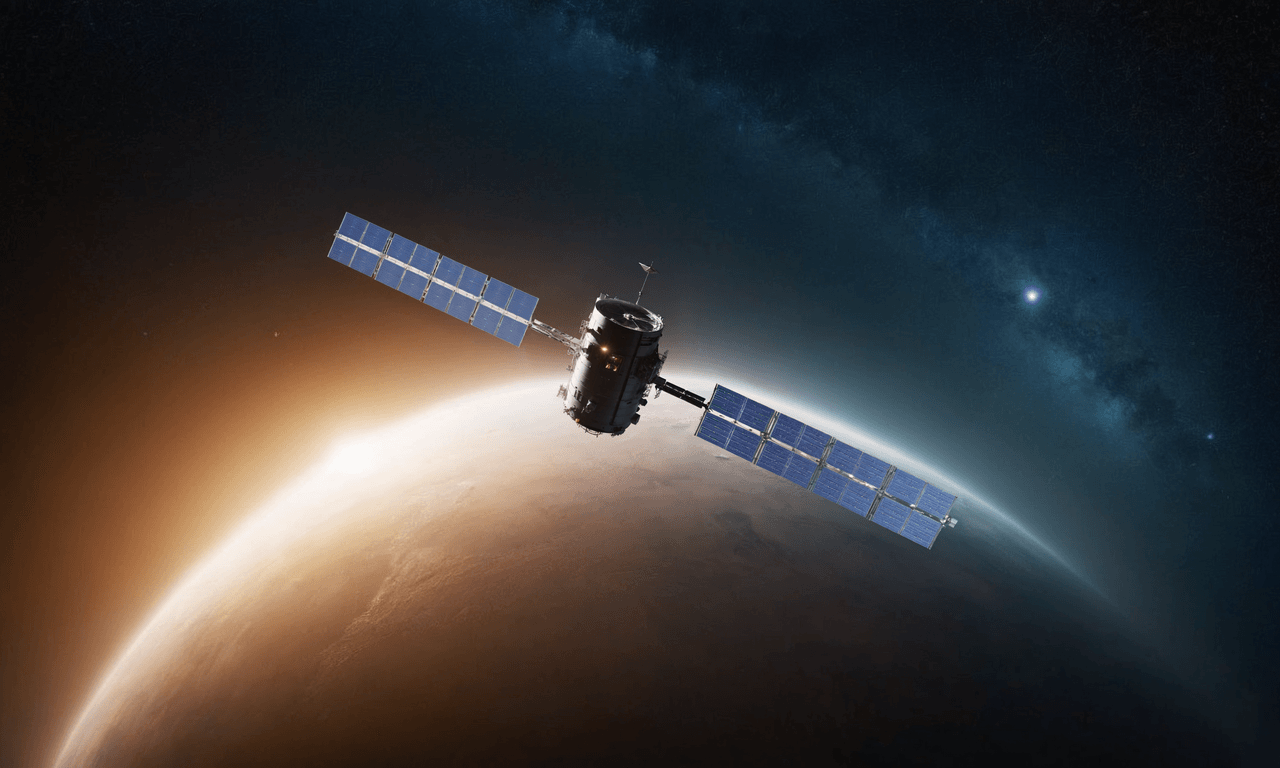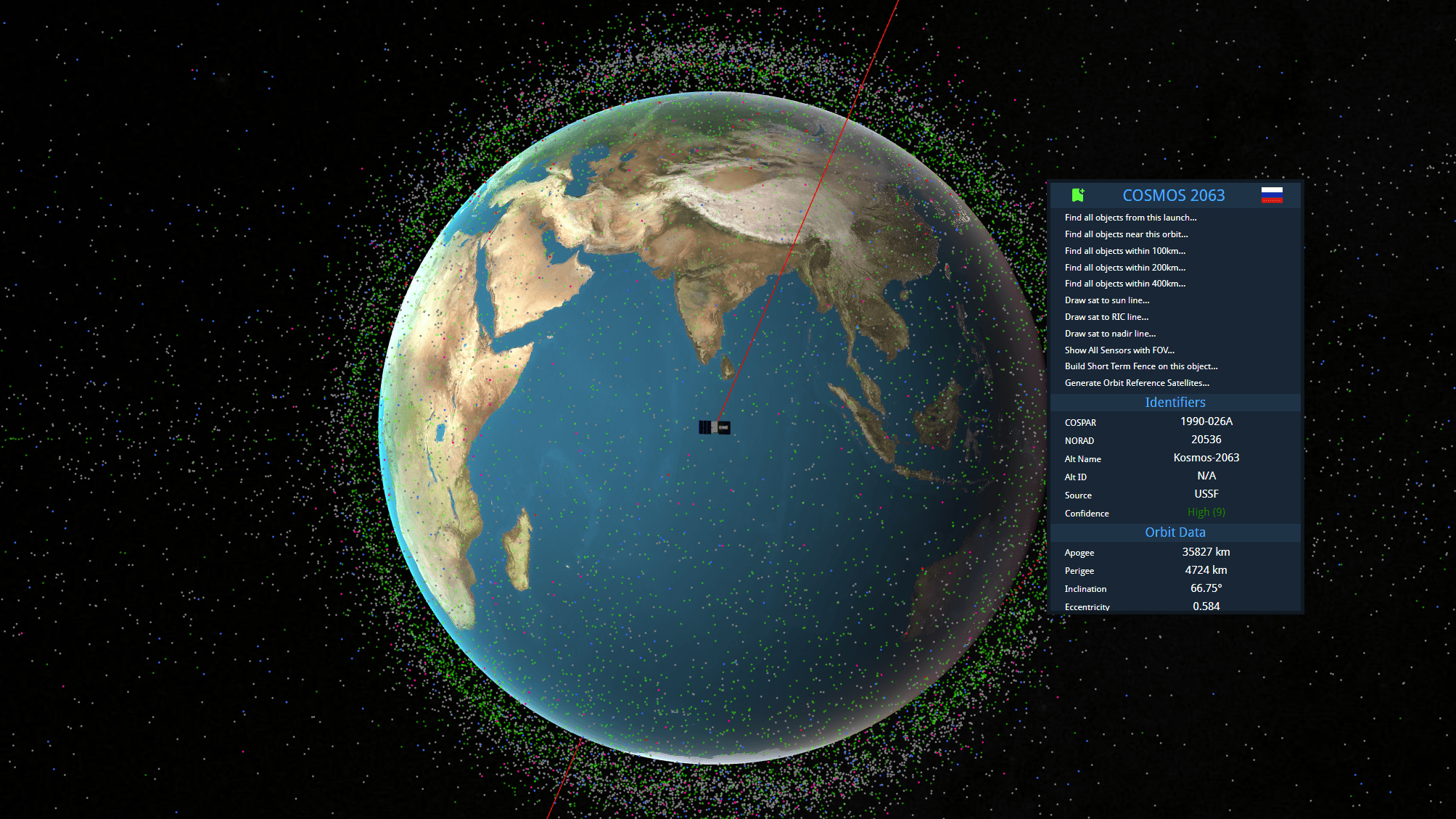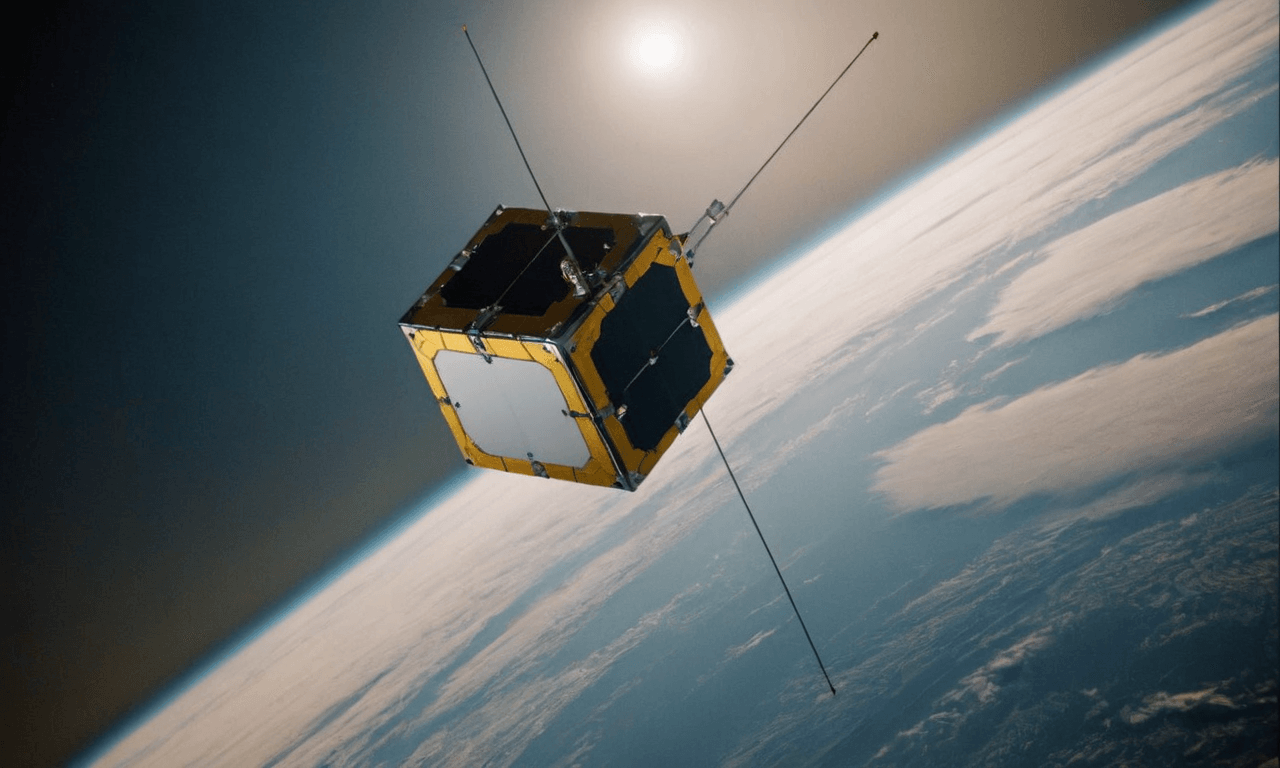· space brief · 7 min read
Space Brief 11 Sep 2024
A recap of notable space events including the Soyuz MS-26 launch to the ISS, Polaris Dawn's altitude achievement, and satellite tracking updates.

📄Top Stories
Three astronauts launched to the ISS today aboard a Russian Soyuz rocket. Meanwhile, the Polaris Dawn mission has set a new Earth orbit altitude record, surpassing Gemini 11’s 1966 achievement. Additionally, the U.S. Space Force is seeking industry insights on hybrid satellite networks automation.
📰Detailed Coverage
Soyuz MS-26 Takes Three Astronauts to the ISS
Today, at precisely 12:23 p.m. EDT, the Russian Soyuz MS-26 spacecraft, carrying NASA astronaut Don Pettit and Roscosmos cosmonauts Alexey Ovchinin and Ivan Vagner, lifted off from Baikonur Cosmodrome, Kazakhstan. This mission will add six months to the crew’s tenure on the International Space Station (ISS), contributing further to our understanding of long-duration space habitation.
The launch highlights Soyuz’s reliability and international partnerships aboard the ISS. Pettit, known for his in-orbit scientific ingenuity, is expected to continue his experimental legacy.
Read the full story: Space.com
Polaris Dawn Breaks 58-Year Altitude Record
The Polaris Dawn mission, helmed by SpaceX’s Dragon capsule “Resilience,” achieved an orbital apogee of 870 miles (1,400.7 kilometers), setting a record for the highest Earth orbit since the Apollo missions. This historical milestone is not just a record attempt but also a scientific venture to study spaceflight’s impacts on human health and spacecraft systems, particularly in the Van Allen radiation belt.
Such high-altitude missions provide crucial data for future deep-space expeditions, with invaluable test results fed back into our web app’s tracking algorithms for enhanced orbital data accuracy.
Read the full story: Space.com
U.S. Space Force Seeks Automated Hybrid Satellite Networks
The U.S. Space Force’s Commercial Satellite Communications Office has issued a request for information (RFI) aimed at automating hybrid satellite networks. This move is intended to optimize satellite communications by leveraging both commercial and military assets, ensuring robust and adaptable satellite connectivity.
Automated hybrid networks are essential for future satellite tracking and management, further integrating our web app’s capabilities with military and commercial satellite data.
Read the full story: SpaceNews
U.S. Military Funds Space-to-Earth Reentry Vehicles
The U.S. military has invested over $100 million in reentry vehicle technology for space-to-Earth cargo delivery, enlisting California-based companies Inversion Space and Outpost Space. This advancement aims to establish rapid, precise delivery of critical materials from orbit to ground operations.
This initiative enhances satellite logistics and validates the importance of agile space capabilities for defense operations. The reentry vehicles could also foster commercial uses, extending the dual-use nature of contemporary space tech.
Read the full story: SpaceNews
OneWeb Introduces Alternative Navigation Service
Addressing vulnerabilities in traditional GPS systems, OneWeb has launched a complementary navigation service accessed through a software-defined outdoor receiver. This system integrates signals from global navigation satellites and other sources like Iridium.
Enhancements in navigation resilience are essential for both military and civilian applications, ensuring uninterrupted and accurate geolocation services. This innovation aligns with escalating global demands for robust and alternative navigation infrastructures.
Read the full story: SpaceNews
South Korea Aims for $1,000 to LEO with Reusable Rockets
South Korea’s new space agency has laid out plans for developing a partially reusable rocket, aiming to significantly reduce launch costs to $1,000 per kilogram for Low Earth Orbit (LEO) missions. This ambitious plan targets SpaceX’s dominance in the commercial space launch sector, promising to democratize access to space.
These developments could increase satellite deployment rates, expanding our tracking database and improving on-orbit object tracking accuracy.
Read the full story: SpaceNews
Certainly! I’ll update the Satellite Spotlight section with the new information you’ve provided. Here’s the updated section:
🛰️Satellite Spotlight
- Satellite Name: Binar-4
- NORAD ID: 60952
- International Designator: 1998-067WS
- Launch Date: August 4, 2024
- Mission: Scientific experiments, in-house developed technology validation, and industry payloads
- Orbit:
- Inclination: 51.6368°
- Period: 92.79 minutes
- RAAN: 272.1174°
- Owner/Operator: Curtin University, Australia
- Interesting Facts:
- Binar-4 is part of a trio of 1U CubeSats (Binar-2, Binar-3, and Binar-4) launched together as a follow-up to Western Australia’s first satellite mission, Binar-1.
- The satellites were deployed from the International Space Station on August 29, 2024, at 7:20 PM AWST.
- Binar-4 and its companions are expected to orbit Earth for 6-12 months before sustainably burning up in the atmosphere.
- The Binar Space Program team received beacons from all three CubeSats just 38 minutes after deployment, confirming their good health.
Current TLE Data:
1 60952U 98067WS 24250.56566665 .00162874 00000-0 26075-2 0 99990
2 60952 51.6368 272.1174 0012960 333.0169 27.0146 15.51950973 1275
Track this satellite in real-time on our web app: Track Binar-4
Amateur radio enthusiasts can listen in on the satellite’s progress. More information is available in the Amateur Radio section of the Binar Space Program website.
🗑️Space Debris Update
Current tracked debris objects: 13893
Notable recent events
- Cluster Satellite Safe Reentry: The first satellite in ESA’s Cluster quartet, named ‘Salsa’ (Cluster 2), safely reentered Earth’s atmosphere on September 8, 2024, at 20:47 CET. This world-first targeted reentry marks a significant achievement in mitigating potential space debris. The controlled descent of the satellite ensures that it won’t contribute to the growing problem of space junk, demonstrating effective end-of-life practices for spacecraft.
For more details, read the full article here.
🚀 Upcoming Space Launches
September 11
- Russian Federal Space Agency (ROSCOSMOS) Soyuz 2.1a | Soyuz MS-26 from Baikonur Cosmodrome, Republic of Kazakhstan (16:23 UTC) Soyuz MS-26 will carry two cosmonauts and one astronaut to the International Space Station aboard the Soyuz spacecraft.
September 12
- SpaceX Falcon 9 Block 5:
- Starlink Group 9-6 from Vandenberg SFB, CA, USA (02:45 - 04:30 UTC) A batch of satellites for the Starlink mega-constellation - SpaceX’s project for space-based Internet communication system.
- BlueBird Block 1 from Cape Canaveral, FL, USA (08:52 - 13:21 UTC) First five satellites for SpaceMobile’s cellphone-compatible broadband constellation.
September 13
- Mitsubishi Heavy Industries H-IIA 202 | IGS Radar 8 from Tanegashima Space Center, Japan (04:00 - 06:00 UTC) The IGS Radar 8 is a Japanese radar reconnaissance satellite. The satellite is operated by the Cabinet Satellite Information Center. The satellite serves both Japan’s national defense and civil natural disaster monitoring.
September 15
- SpaceX Falcon 9 Block 5 | Galileo L13 (FOC FM26 & FM32) from Cape Canaveral, FL, USA (22:48 - 23:39 UTC) Two satellites for Europe’s Galileo navigation system. Galileo provides Europe with an alternative to the American GPS and Russian GLONASS constellations, but will be interoperable with both systems.
September 16
- Rocket Lab Electron | Kinéis Killed the RadIoT Star (Kinéis 6-10) from Onenui Station, Mahia Peninsula, New Zealand (23:01 UTC) Second batch of five satellites for the French Kinéis IoT constellation designed to operate with 25 nanosatellites of 30 kg each.
September 24
- SpaceX Falcon 9 Block 5 | Crew-9 from Cape Canaveral, FL, USA (18:50 UTC) SpaceX Crew-9 is the ninth crewed operational flight of a Crew Dragon spacecraft to the International Space Station as part of NASA’s Commercial Crew Program.
September 30
Galactic Energy Ceres-1 | Unknown Payload from Jiuquan Satellite Launch Center, People’s Republic of China (00:00 UTC) Details TBD.
SpaceX Falcon 9 Block 5 | OneWeb 20 from Vandenberg SFB, CA, USA (00:00 UTC) A batch of 20 satellites for the OneWeb satellite constellation, which is intended to provide global Internet broadband service for individual consumers.
SpaceX Starship | Integrated Flight Test 5 from SpaceX Starbase, TX, USA (00:00 UTC) Fifth test flight of the two-stage Starship launch vehicle.
Note: Launch dates and times are subject to change due to technical or weather considerations.
💡Did You Know?
The Polaris Dawn mission, which just set a new altitude record, is part of a larger program that aims to rapidly advance human spaceflight capabilities. This mission’s success in reaching high Earth orbit has direct implications for future deep space exploration, including potential lunar and Mars missions. The data collected on the effects of increased radiation exposure at these altitudes will be crucial for designing protective measures for astronauts on long-duration missions beyond Low Earth Orbit.
🔬Technical Corner
Hybrid Satellite Networks
Hybrid satellite networks, which the U.S. Space Force is exploring for automation, combine different types of satellite systems to provide robust and flexible communication capabilities. These networks typically integrate geostationary (GEO), medium Earth orbit (MEO), and low Earth orbit (LEO) satellites.
Key aspects of hybrid satellite networks include:
- Diverse orbital altitudes: Utilizing satellites at various altitudes provides complementary coverage and reduces latency.
- Interoperability: Systems must be designed to seamlessly switch between different satellite types and ground stations.
- Adaptive routing: Intelligent systems direct traffic through the most efficient pathways based on current conditions and priorities.
- Resilience: The distributed nature of hybrid networks enhances overall system reliability and resistance to disruptions.
- Scalability: These networks can be expanded by adding new satellites or integrating additional commercial services.
Automating hybrid satellite networks presents unique challenges, including managing complex routing algorithms, ensuring cybersecurity across diverse systems, and maintaining consistent performance. The U.S. Space Force’s interest in this technology underscores its potential to revolutionize military and commercial satellite communications, providing more reliable and adaptable connectivity for a wide range of applications.




